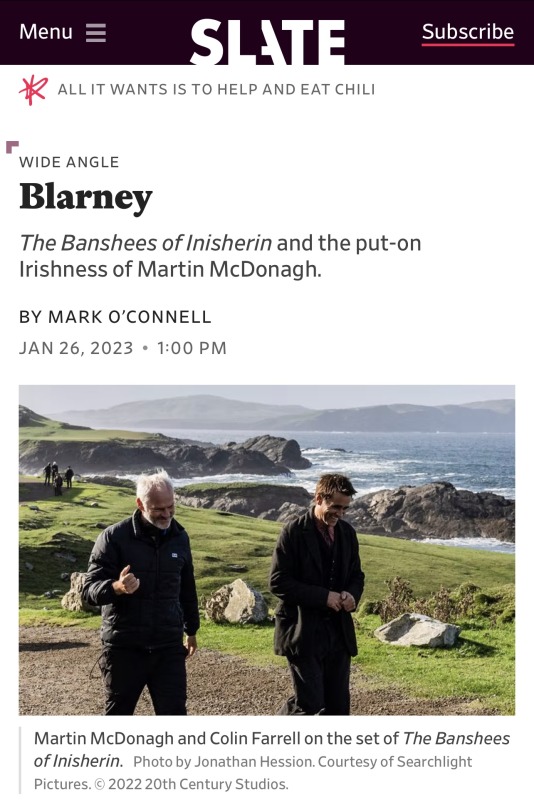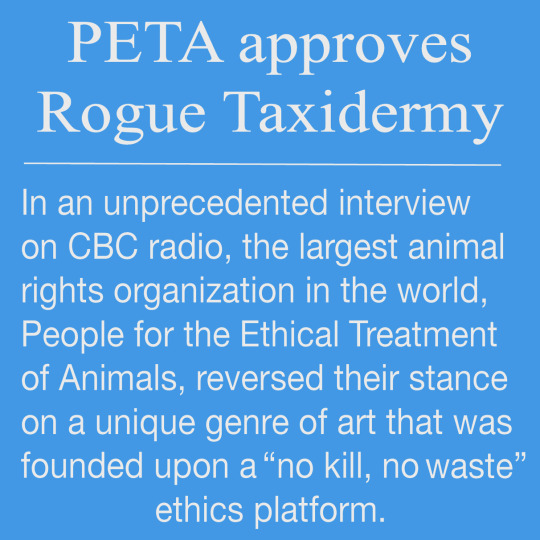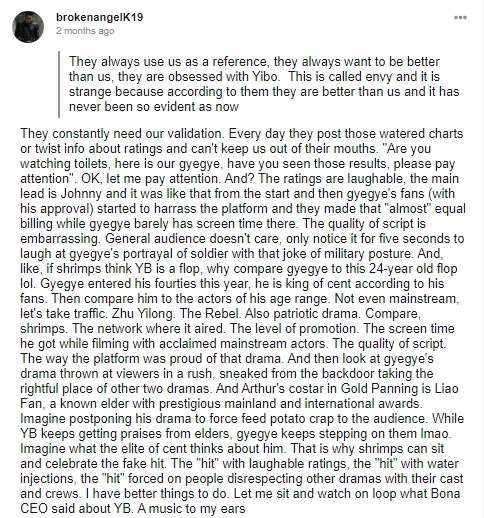#mainstream validation and acclaim lol
Text

aaaand it begins
#i started reading this but then no offense. but i was like man i just don’t really care lmao#its a loooooong article and a major cornerstone of the argument is largely that mcdonagh is not really authentically irish and he tries to#make up for this by frequently employing - either to play with or to profit from - irish stereotypes in his films#slate routinely has some of the most blatantly opportunistic entertainment journalism i’ve ever read its remarkable#even if the take is good you can’t read it without rolling your eyes because they wouldn’t bother with it if said film was not getting#mainstream validation and acclaim lol#and i don’t mean writing to what’s topical either. thats normal. thats not what this is lol#remember the PYW takedown
13 notes
·
View notes
Text
look i understand that raya is a great first step in representation in mainstream (see: north american/generally western media) but i guess keep in mind that being the first or a big step, esp when we are exposed and educated about a lot of international history, that the movie is not free from criticism??
and keep in mind that most of Southeast Asia, like most of the colonized world, is still dealing with the aftermath of colonialism, imperialism and Western influence in general. like 90% of the region was ravaged by the west except thailand and perhaps some others which i am not familiar with, and not every country has bounced back.
ive seen some native vs diaspora SEAsian discourse and while the frustrations of both sides are valid, i feel efforts are better spent looking at the larger issue vs like saying one type of asian's experience and reaction to the movie is more or less valid than the other
like yes, this is kids media, this will objectively be a good movie because of disney pixar's track record, and it will be great for all the young Southeast Asians away from their home country to experience. seeing yourself in popular media is immensely powerful and inspiring and its a great way to bust that dam and get more stories out there
but the amalgamation of cultures into a muddied mess, the way this movie might unintentionally become a monolithic narrative of the region, the possible worsening of tokenization and gentrification of the cultures of these countries, the largely east asian casting choice (taking into account the dominance that east Asian media, beauty standards and economy has a gorilla grip on the region) ( and akwafina??? really???), the fact that Disney+ isn't available in the region (except in Singapore where i am) and the great irony that is a western media giant is essentially going to sell a SEAsian inspired story back to the region
just...
lol...
the movie can be both critically acclaimed and critically consumed, they aren't mutually exclusive
#Andre talks#Do not rb thx#I am seeing it tomorrow so i will have a clearer idea and will maybe eat my words#Also again... Singapore is SEA-lite#And i have no specific tangible culture to my ethnicity aside from food and language due to being from a Creole community that formed out#Of the colonization of indigenous malayan people from 1500s to 1800s#Malayan and Indonesian people i guess#There will be many more articulate people than me#Esp scholars#I just have a lot of thoughts about the movie#And i have a lab report which is like nails on a chalkboard so this is infinitely better to talk about than doing my work#Also i am one Asian and my opinion isn't the only one and I'm sure there will also be many seasians native and diasporic who will disagree#if someone reblogs this ur getting blocked#and like again very privilged position as a singaporean#at least we have a movie about us!!!#ya one where its personality is largely consumerist classist and capitalist...#and still very much dominated by the chnese racial majority#where the native malayan people are almost entirely excluded from in favor of chines xtians#henry golding gets a pass bc hes half iban... but also half white...
15 notes
·
View notes
Photo

FLASHBACK FRIDAY~
Without question, the most significant event of the last decade came to me in the form of a radio show in 2017. To the surprise of everyone participating in the show, a PETA spokesperson issued a statement sanctioning the use of humanely acquired dead animals for the purpose of art.
It was an episode of The Current on CBC radio, hosted by the acclaimed radio and television journalist Anna Maria Tremonti. The show was about the genre of rogue taxidermy art and how the genre spurred the current taxidermy revival. The show featured several interviews with people associated with rogue taxidermy. As co-founder of the genre and the subsequent artistic movement, I was among the interviewees. The genre was the brainchild of co-founder Scott Bibus, co-founder Robert Marbury, and myself. In 2004 we coined the term “rogue taxidermy” and formed an online artist collective based on our respective styles of sculpture. We then began recruiting artists working in a similar vein to join our collective and unite under the moniker of rogue taxidermy. The definition of rogue taxidermy that we set forth is: “A genre of pop-surrealist art characterized by mixed media sculptures containing conventional taxidermy-related materials that are used in an unconventional manner”. The genre encompasses a variety of materials and doesn’t always involve animal parts, it can be entirely synthetic. However, the foundation of our collective was a doctrine that mandated animals could not be killed for the sake of art and all members of the group were required to adhere to this directive. Ultimately our efforts led to the collective spearheading an international artistic movement centered around our ideology and our aesthetic. It became known as the Rogue Taxidermy art movement. Predictably, PETA denounced it.
Prior to forming our collective I had a long history of using animal remains in my art. And a long history of receiving pushback. I began incorporating animal parts into my art in the early 1990’s while earning my BFA from the Minneapolis College of Art and Design. Because of my love for animals, the philosophy underlying my work dictated that I only use animals that died of natural causes and roadkill. Out of respect for Mother Nature my mantra in the studio was “waste not, want not” because nothing that was once living should ever be taken for granted. So when I sat down with my fellow co-founders, Scott Bibus and Robert Marbury, to write up a charter for membership to our collective I clearly needed those precepts to be included. We wove them into the philosophical framework of the genre and this code of ethics was explicitly laid out on our collective’s website, just as it had been laid out on my own personal website for many years prior to forming the collective. My ethical practices had always been front and center on my personal website in the form of my artist statement and biography. My site conveyed the special bond I had with animals during my formative years and how the intimate relationships I had with them shaped my art. It explained how my work was an homage to the animal. How turning an animal’s body into a piece of art was the purest form of veneration; a type of veneration akin to the bejeweled remains of saints enshrined in Medieval Churches, or to the Victorian practice of creating mourning art out of the hair and teeth of deceased loved ones. I talked about my work being deeply rooted in a personal belief system that could be traced back to my childhood; a belief system that occupied the same place in my psyche that formal religion occupied in other people’s psyche. My work was a form of zoolatry.
But none of that mattered to my sanctimonious haters. I was persecuted for my belief system for years. The lambasting often came from hypocrites who experienced no moral dilemma when eating or wearing a cow, yet they had a problem with me utilizing roadkill. It was the early 1990's and using an animal’s body in art was taboo. Animal activists throwing red paint onto the fur coats of celebrities and fashion runways was at the height of its popularity during this era. I was the victim of bullying for nearly 20 years in the form of endless hate mail, death threats, and being slandered in literature by prominent animal rights authors. The attacks generally had one of two themes; my art was disrespectful, and/or I needed to give the animals a proper burial. Apparently all animals are Christian LOL…. FTR, burying the dead would be sacrilege in many cultures… But I digress. I never lashed out at my critics. Instead, I spent endless hours of my life responding to their misdirected hate with courteous email responses that reiterated the principles behind my work. I attempted to initiate conversations about tolerance by gently reminding them it was not their place to impose their standards, customs, and beliefs on other people (or onto a dead animal...) The concept of reverence is contingent upon intent and context. No one has the right to decide how someone else is allowed to venerate something. Nor does anyone have the right to force their aesthetics on someone else simply because something doesn’t appeal to their tastes. Beauty is in the eye of the beholder. This (uphill) battle continued for years.
So fast forward to 2017... Never in my wildest fantasies did I think I would someday be sitting in a radio broadcasting booth where the sound bite following my interview would be a PETA representative speaking these words:
“[When discussing rogue taxidermy] The most important thing is to look at how the animal died. If the animal died naturally or in an accident, then PETA doesn’t have a problem with preserving their carcass. . .”
The moment was surreal. Our mission finally resonated with the largest animal rights group in the world. And in that moment, this became a landmark radio broadcast. It was testament to the merit of our core values. Those of us who fought on the front lines took flak for decades as we carved out our niche. In doing so, we laid a path for others to follow. And many did. Via strength in numbers, and sheer perseverance, dialogue developed that began engaging the mainstream. Dialogue about human/animal relationships. About how humans process death. About the concept of reverence. And about making space for practices outside those of the dominant culture. The radio show was an achievement of a lifetime for me. Appeasing PETA was never a goal, and that’s not the achievement. (I have probably taken issue with as many of their activities over the years as they have taken with mine.) The fact that they acknowledged our mission represented a higher accomplishment – it was an indicator that the movement’s ideology had influenced mainstream sensibilities. As an artist who has had to defend her work and her character for her entire life, it was incredibly validating in that regard. PETA’s statement was vindication of the tenets I had been actively championing for a quarter of a century.
The "no kill" ethics platform of the Rogue Taxidermy art movement is a first-of-a-kind. Prior to the inception of the genre of Rogue Taxidermy art, never before in history had taxidermy been associated with the humane sourcing of animals. Conversely, taxidermy had been associated with the killing of animals. This stigma created a seemingly insurmountable hurdle for the movement. Historically, all groundbreaking cultural movements were considered deviant and radical at their inception. Encountering resistance is part of the birth of any movement that calls into question long-standing traditions and moral standards. But challenging established societal norms is how horizons are broadened and new concepts are assimilated. It's the fundamental basis of how culture evolves.
Clearly the statement issued by PETA is in no way saying all art created within the genre of Rogue Taxidermy is acceptable to them. Not everyone working under the umbrella of Rogue Taxidermy adheres to the genre’s cornerstone values. There is no lack of people exploiting the genre’s popularity to line their own pockets. I regularly see the catchphrase “ethically-sourced” thrown around in situations where that descriptor is a real stretch. Of course there are gray areas, and of course there is room for interpretation on both sides of the fence. However, PETA’s statement was inarguably a milestone; one that was reached after an arduous journey of baby steps. To the artists working within the genre who are purists, and as such practice true humane-sourcing of their animals; hats off to every single one of you. #You’veComeALongWayBaby
__________________________________________________
I encourage you to replace your daily podcast time slot with this radio broadcast. It’s worth every second of the 20-minute time investment, especially the last half – You absolutely don’t want to miss the extremely insightful interview with author, lecturer, and researcher Joanna Ebstein, founder of the Morbid Anatomy Museum. The segment also features the immensely talented Beth Beverly who was a fellow member of the rogue taxidermy artist collective.
Click here to listen to the show ~
__________________________________________________
Unabridged history of the art movement
https://www.sarina-brewer.com/introduction.html
My biography & artist statement
https://www.sarina-brewer.com/taxidermy-sculpture-artist-sarina-brewer.html
_________________________________________________
#FeministArt#WomenInArt#RogueTaxidermy#PETA#Ethics#AnimalsInArt#AnimalRights#AnimalWelfare#Conservation#EthicalArt#TaxidermyArt#Tolerance#Progress#Culture#ArtMovement#Philosophy#FlashbackFriday#FBF#You've come a long way baby
6 notes
·
View notes
Text

They constantly need our validation. Every day they post those watered charts or twist info about ratings and can't keep us out of their mouths. "Are you watching toilets, here is our gyegye, have you seen those results, please pay attention". OK, let me pay attention. And? The ratings are laughable, the main lead is Johnny and it was like that from the start and then gyegye's fans (with his approval) started to harrass the platform and they made that "almost" equal billing while gyegye barely has screen time there. The quality of script is embarrassing. General audience doesn't care, only notice it for five seconds to laugh at gyegye's portrayal of soldier with that joke of military posture. And, like, if shrimps think YB is a flop, why compare gyegye to this 24-year old flop lol. Gyegye entered his fourties this year, he is king of cent according to his fans. Then compare him to the actors of his age range. Not even mainstream, let's take traffic. Zhu Yilong. The Rebel. Also patriotic drama. Compare, shrimps. The network where it aired. The level of promotion. The screen time he got while filming with acclaimed mainstream actors. The quality of script. The way the platform was proud of that drama. And then look at gyegye's drama thrown at viewers in a rush, sneaked from the backdoor taking the rightful place of other two dramas. And Arthur's costar in Gold Panning is Liao Fan, a known elder with prestigious mainland and international awards. Imagine postponing his drama to force feed potato crap to the audience. While YB keeps getting praises from elders, gyegye keeps stepping on them lmao. Imagine what the elite of cent thinks about him. That is why shrimps can sit and celebrate the fake hit. The "hit" with laughable ratings, the "hit" with water injections, the "hit" forced on people disrespecting other dramas with their cast and crews. I have better things to do. Let me sit and watch on loop what Bona CEO said about YB. A music to my ears
0 notes